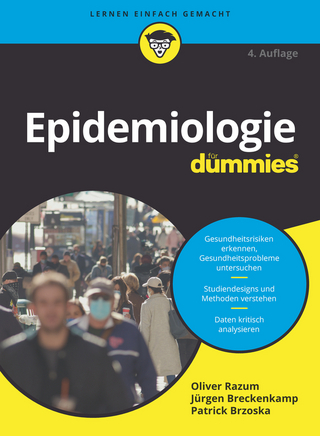
Manual of Pharmacologic Calculations
Springer-Verlag New York Inc.
978-0-387-90500-6 (ISBN)
- Titel ist leider vergriffen;
keine Neuauflage - Artikel merken
With the tables in the Appendix and a pocket calculator, all of the calculations can be done without reference to any other source. It is recommended that the pro- cedure and sample calculation be read and understood before going to the automated "magic" of the computer program in Part II.
I: Computational Procedures.- 1. Dosage and Concentration: Drug Stock Solutions.- 2. Mean, Standard Deviation, and Confidence Limits.- 3. Linear Regression I.- 4. Linear Regression II: Lines through Origin.- 5. Analysis of the Regression Line.- 6. Parallel Lines I: Test for Parallelism.- 7. Parallel Lines II: Construction of Parallel Lines.- 8. Graded Dose-Response.- 9. Quantal Dose-Response: Probits.- 10. Relative Potency.- 11. Dissociation Constant I: Agonists.- 12. Dissociation Constant II: Partial Agonists.- 13. Dissociation Constant III: Perturbation Methods (Rate Constants in the Drug-Receptor Reaction).- 14. pA2 Analysis I: Schild Plot.- 15. pA2 Analysis II: Time-Dependent Method.- 16. pA2 Analysis III: Constrained Plot.- 17. Enzyme Kinetics I: Michaelis-Menten Equation.- 18. Enzyme Kinetics II: Competitive Inhibition.- 19. Enzyme Kinetics III: Noncompetitive Inhibition.- 20. First-Order Drug Decay.- 21. Scatchard Plot.- 22. Henderson-Hasselbach Equation.- 23. Exponential Growth and Decay.- 24. Constant Infusion with First-Order Elimination.- 25. Multiple Intravenous Injections.- 26. Area under a Curve: Simpson's Rule and Trapezoidal Rule.- 27. Analysis of Variance.- 28. t-Test I: Grouped Data.- 29. t-Test II: Paired Data.- 30. Chi-Square Test.- 31. Dunnett's Test (Comparison with a Control).- 32. Mann-Whitney Test.- 33. Method of Litchfield and Wilcoxon: Confidence Limits of ED50.- II: Computer Programs.- to Computer Programs.- S1 Dosage & Concentration: Drug Stock Solutions.- S2 Mean, Standard Deviation & Confidence Limits.- S3 Linear Regression I.- S4 Linear Regression II: Lines Through Origin.- S5 Analysis of the Regression Line.- S6 Parallel Lines I: Test for Parallelism.- S7 Parallel Lines II: Construction of Parallel Lines.- S8 Graded Dose-Response.- S9 Quantal Dose-Response: Probits.- S10 Relative Potency.- S11 Dissociation Constant I: Agonists.- S12 Dissociation Constant II: Partial Agonists.- S13 Dissociation Constant III: Perturbation Methods.- S14 pA2 Analysis I: Schild Plot.- S15 pA2 Analysis II: Time-Dependent Method.- S16 pA2 Analysis III: Constrained Plot.- S17 Enzyme Kinetics I: Michaelis-Menten Equation.- S18 Enzyme Kinetics II: Competitive Inhibition.- S19 Enzyme Kinetics III: Noncompetitive Inhibition.- S20 First-Order Drug Decay.- S21 Scatchard Plot.- S22 Henderson-Hasselbach Equation.- S23 Exponential Growth & Decay.- S24 Constant Infusion with First-Order Elimination.- S25 Multiple IV Injections.- S26 Area under a Curve: Trapezoidal & Simpson's Rules.- S27 Analysis of Variance.- S28 t-Test I: Grouped Data.- S29 t-Test II: Paired Data.- S30 Chi-Square Test.- S31 Dunnett's Test.- S32 Mann-Whitney U-Test.- S33 Litchfield & Wilcoxon Test.- Appendix: Mathematical Tables.
| Zusatzinfo | biography |
|---|---|
| Verlagsort | New York, NY |
| Sprache | englisch |
| Gewicht | 405 g |
| Themenwelt | Mathematik / Informatik ► Mathematik |
| Medizin / Pharmazie ► Medizinische Fachgebiete ► Pharmakologie / Pharmakotherapie | |
| Medizin / Pharmazie ► Pflege | |
| Medizin / Pharmazie ► Pharmazie ► PTA / PKA | |
| Studium ► Querschnittsbereiche ► Epidemiologie / Med. Biometrie | |
| ISBN-10 | 0-387-90500-6 / 0387905006 |
| ISBN-13 | 978-0-387-90500-6 / 9780387905006 |
| Zustand | Neuware |
| Haben Sie eine Frage zum Produkt? |
aus dem Bereich


